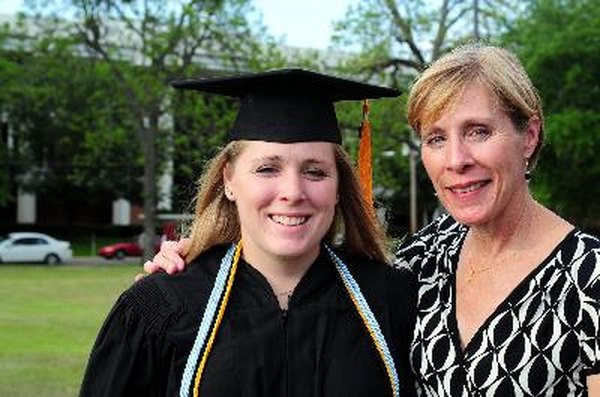What Is the Difference Between a FAFSA & Federal Stafford Loan?
Complete a FAFSA to see if you're eligible for a Stafford Loan.
graduate and mother image by jimcox40 from Fotolia.com
When you or your child applies for enrollment at a college or university, one of the first things you’ll be asked to do is complete a financial aid file. Every higher education financial aid department requires this information to screen for programs, such as the Stafford loan, that a student may be eligible for. A FAFSA is the cornerstone screening tool used by these offices, and a student is required to complete one each year he’s enrolled.
FAFSA
A FAFSA is the Free Application for Federal Student Aid. This application is required by most higher education institutions to determine the amounts and types of federal aid available to each student. The application is submitted through the U.S. Department of Education and can be completed online through the fafsa.ed.gov website. Paper versions of the application are also available to complete and mail in. The FAFSA uses information about the student, and his parents if the student is under age 24, to estimate the amount a family can contribute during the school year toward the costs of tuition and fees. The less a family is able to contribute, the more federal aid a student may receive. Estimated family contribution results are only a tool to measure the federal aid a student is eligible to receive — they are not indicative of amounts a family must pay out of pocket.
Federal Stafford Loan
A federal Stafford loan is one type of federal aid you’re screened for when you submit a FAFSA. Subsidized Stafford loans are available to students who have financial need, and the interest on these loans is subsidized by the government while the student it in school. Unsubsidized Stafford loans are available to most students, regardless of financial need. The interest on unsubsidized Stafford loans begins accruing when the loan is taken out. Students can pay the accrued interest while in school, but they are not required to pay it until the full loan is in repayment status, which is six months after a student is no longer enrolled. If the interest on an unsubsidized loan is not paid while the student is enrolled, it is capitalized and added to the principal balance of the loan. Financial aid offices use FAFSA information to determine the financial needs of the student and the amount each student can borrow, up to the maximum Stafford loan limits.
Loan Limits
Stafford loan limits are based on whether the student is considered dependent or independent, the year of his attendance, and the aggregate total of the student’s Stafford loan debts. In most cases, a student is dependent if he is under age 24, has no dependent children of his own and is not married. Students over the age of 24 are automatically considered independent. As of 2012, the aggregate Stafford loan limits for a dependent undergraduate student is $31,000, and the aggregate limits for undergraduate independent students is $57,500. Of these totals, $23,000 can be from subsidized loans for either category. Graduate students may receive no more than $138,500 in Stafford loans, $65,000 of which can come from subsidized loans. Graduate student aggregate limits include Stafford loans the student takes out while an undergraduate.
Other Federal Aid
The FAFSA also screens for other types of federal aid, such as the Pell and Federal Supplemental Educational Opportunity Grants, Perkins loans and Parent PLUS loans. The school where you choose to have your FAFSA sent may use information from the application to screen for other nonfederal types of aid, which might include state or local grants and scholarships, and financial aid programs offered solely through the school.
References
Writer Bio
With a background in taxation and financial consulting, Alia Nikolakopulos has over a decade of experience resolving tax and finance issues. She is an IRS Enrolled Agent and has been a writer for these topics since 2010. Nikolakopulos is pursuing Bachelor of Science in accounting at the Metropolitan State University of Denver.

